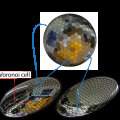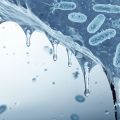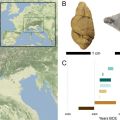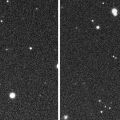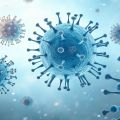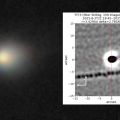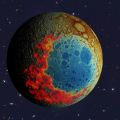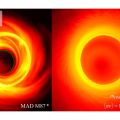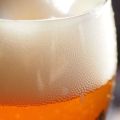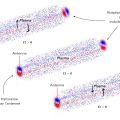Chloronaphtalène (maladie professionnelle) - Définition
La liste des auteurs de cet article est disponible ici.
Sources spécifiques
- (fr)Tableau N° 9 des maladies professionnelles du régime Général
Chorobenzène
Données professionnelles
Le chlorobenzène est un composé organique aromatique monocyclique, de formule chimique C6H5Cl, constitué d'un noyau benzénique substitué par un atome de chlore.
Il a été préparé pour la première fois en 1851 par réaction du phénol et du pentachlorure de phosphore. Il a, notamment au début du XXe siècle et durant la Première Guerre mondiale, servi à fabriquer la mélinite (acide picrique), explosif très puissant, le plus utilisé à l'époque.
Dès 1960, sa production a décliné aux États-Unis, au profit du cumène (utilisé pour synthétiser le phénol) et suite à l'abandon progressif du DDT.
Le chlorobenzène est ou a été utilisé comme intermédiaire de synthèse en chimie, dont pour fabriquer des pesticides, notamment le DDT obtenu par réaction avec du trichloroacétaldéhyde...Et des désherbants ou fongicides (antimite notamment) (Le DDT est aujourd'hui interdit ou fortement réglementé)
Il a été très utilisé pour produire le phénol, l’aniline et comme solvant (nettoyage des graisses).
Dans les réactions de substitution électrophile, c'est un ortho-para directeur désactivant.
Données médicales
C'est une substance nocive, à manipuler avec précautions.
Sa limite d'exposition professionnelle est fixée en France à 10 ppm, soit 46 mg/m³ d'air.
Étiquetage : Phrases de risque et conseils de prudence selon l'INRS
| Exposé des risques et mesures de sécurité | |
|---|---|
| R: 10 | inflammable. |
| R: 20 | nocif par inhalation. |
| R: 51/53 | Toxique pour les organismes aquatiques, peut entraîner des effets néfastes à long terme pour l'environnement aquatique. |
| S: 24/25 | Éviter le contact avec la peau et les yeux. |
| S: 61 | Éviter le rejet dans l’environnement. Consulter les instructions spéciales/la fiche de données de sécurité. |
| 203-628-5 | Etiquetage CE. |
Notes et références
- Tous les tableaux du régime Général sur Bossons futés
- van de Plassche, E.; Schwegler, A.; Polychlorinated naphthalenes: Preliminary Risk Profile, Pays-Bas, 2002
- Teleky|, L.; Die pernakrankheit, Klinische Wochenschrift (Berlin: Springer), Jahrgänge 6, 1927, p. 845
- Flinn, F. B.; Jarvik, N. E.; Action of certain chlorinated naphthalenes on the liver, Proceedings of the Society for Experimental Biology and Medicine, 35, 1936, p. 118
- Butler, D. A.; The early history of scientific and medical research on ’agent orange’, Brooklyn Journal of Law and Policy, 13:2, 2005, p. 527
- Drinker, C. K.; Warren, M. F.; Bennet, G. A.; The problem of possible systemic effects from certain chlorinated hydrocarbons, Journal of Industrial Hygiene and Toxicology, 19:7, 1937, p. 283
- Howe, P. D.; Melber, C.; Kielhorn, J.; Mangelsdorf, I.; Chlorinated naphthalenes, International Programme on Chemical Safety CICAD, 34, 2001
- duPont de Nemours & Co., E. I.; Neoprene FB: Material Safety Data Sheet, 1985
- U.S. National Institute for Occupational Safety and Health, Chlorinated naphthalenes exposure: Worker Notification Program, 1996
- Omura, M.; Masuda, Y.; Hirata, M.; Tanaka, A.; Onset of spermatogenesis is accelerated by gestational administration of 1,2,3,4,6,7-hexachlorinated naphthalene in male rat offspring, Environmental Health Perspectives, 108:6, 2000, p. 539
- Guide ONU
- Documentaire d'Arte d'après « Le Monde selon Monsanto »
- Gladen, B.; Longnecker, M.; Schecter, A.; Correlations among polychlorinated biphenyls, dioxins and furans in humans, American Journal of Industrial Medicine, 35, 1999, pp. 15-20.
- Report on Carcinogens, 11th edition, Research Triangle Park, NC : U.S. Department of Health and Human Services, Public Health Service, National Toxicology Program (2005) [MO-020358] (Site Web)
- IARC Working Group on the Evaluation of Carcinogenic Risks to Humans, Overall evaluations of carcinogenicity : an updating of IARC monographs volumes 1-42, IARC monographs on the evaluation of carcinogenic risks to humans, Supplement 7, Lyon : International Agency for Research on Cancer (1987) [MO-011531] Monographie
- IARC Working Group on the Evaluation of Carcinogenic Risks of Chemical to Man, Some anti-thyroid and related substances, nitrofurans and industrial chemicals, IARC monographs on the evaluation of carcinogenic risks of chemical to man, Vol. 7, Lyon : International Agency for Research on Cancer (1974) [MO-023432] (Site IARC)
- Voir notamment les conventions internationales d'Aarhus, Genève et Stockholm.


